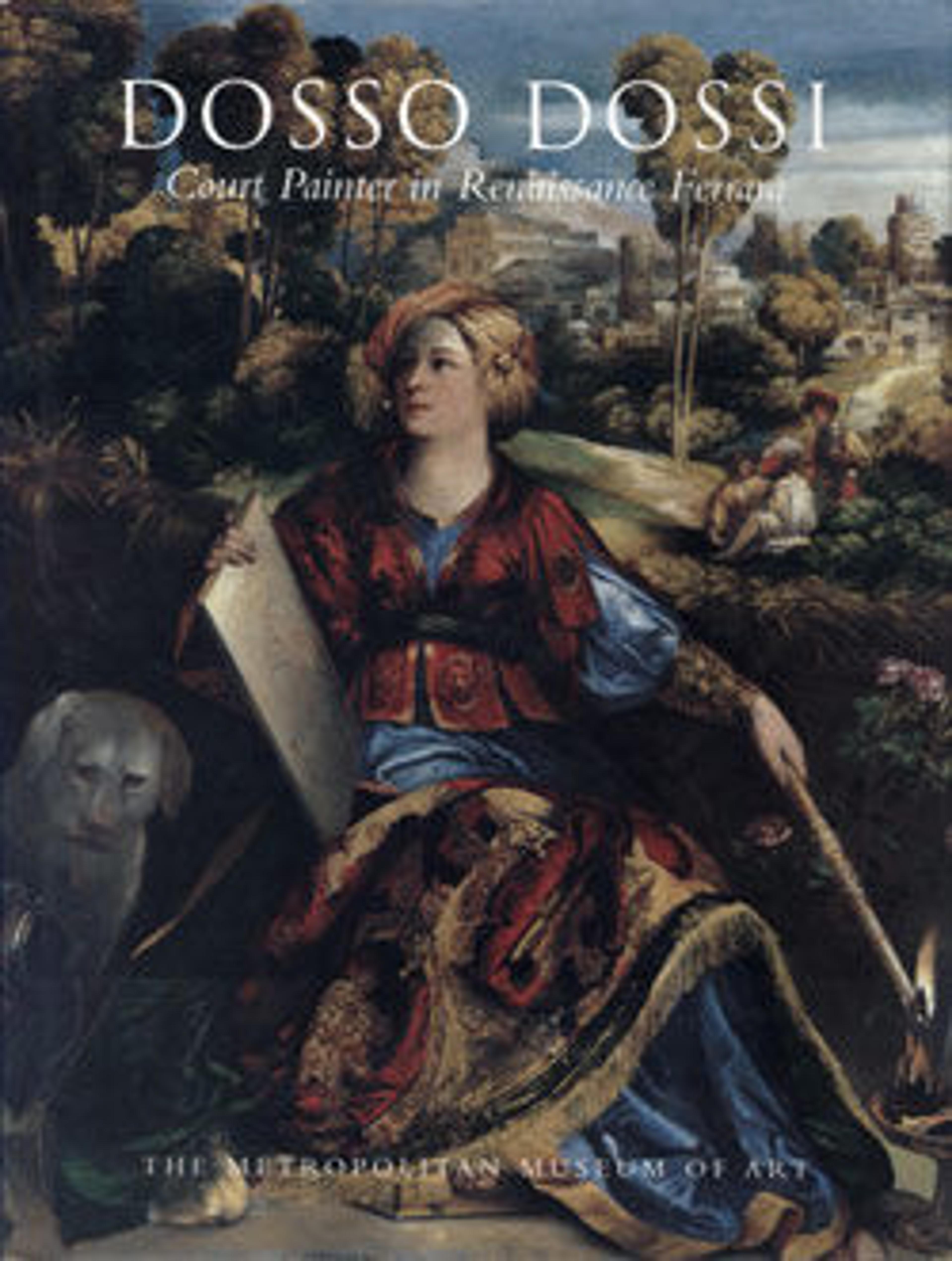
Dosso Dossi: Court Painter in Renaissance Ferrara
Imagination, sensual delight, a sharp wit—these qualities were enormously prized in sixteenth-century Ferrara, where one of the most cultured and powerful courts of the High Renaissance held sway. Dosso Dossi was the idiosyncratic, brilliant painter most responsible for turning those values into a glorious artistic reality. Dosso's rich color schemes are akin to those of his fellow North Italian Titian; he learned something about innovative composition from Raphael and about the force of the body from Michelangelo. But his paintings have a very individual appeal. In leafy natural surroundings containing an array of animals and heavenly bodies, events unfold that are often enigmatic, enacted by characters whose interrelationships elude definition. Dosso's painted world shares the spirit of contemporaneous epic poetry—such as Ariosto's Orlando Furioso—imbued as it is with mystery and transformation, energy and invention.
Along with his predecessor Giorgione, Dosso was one of the first painters to improvise on the canvas. Rather than following careful preparatory drawings, he composed and recomposed as he painted—a remarkably free process that is clearly revealed in new x-ray and infrared photographs. Dosso's virtuosic painting performance was thus itself a kind of magical invention. The play of his imagination is evident not only in the many pictures representing mythological or literary subjects but also in his religious paintings, which are lyrical and original, filled with spectacular visual effects and touches of humor.
When Ferrara's fortunes changed, at the end of the sixteenth century, most of Dosso's paintings were taken to Rome and ultimately dispersed. For this exhibition, almost all the surviving paintings have been brought together; in the catalogue entries each one receives a fresh and comprehensive scholarly discussion. The catalogue also contains essays that describe Dosso's artistic career and the highly charged world of the court at Ferrara and that probe the visual poetry and subtle wit of his work. The illuminating results of an extensive campaign of technical examination, undertaken in connection with the exhibition, are discussed and illustrated in additional essays and in observations that accompany the catalogue entries throughout. The book includes a full review of the scholarly literature, color reproductions of the paintings, many comparative illustrations, a chronology, and a complete bibliography.
Met Art in Publication
Citation
Dossi, Dosso, Peter Humfrey, Mauro Lucco, Andrea Rothe, Andrea Bayer, Galleria Civica d’Arte Moderna, and Metropolitan Museum of Art, eds. 1998. Dosso Dossi: Court Painter in Renaissance Ferrara ; [Catalogue ... in Conjunction with the Exhibition “Dosso Dossi, Court Painter in Renaissance Ferrara” Held at the Galleria d’Arte Moderna e Contemporanea, Ferrara, September 26 - December 14, 1998, at the Metropolitan Museum of Art, New York, January 14 - March 28, 1999, and at The J. Paul Getty Museum, Los Angeles, April 27 - July 11, 1999]. New York, NY: The Metropolitan Museum of Art.